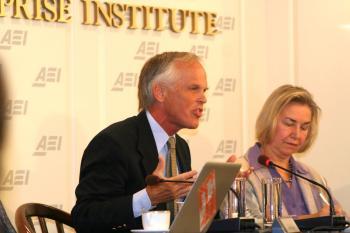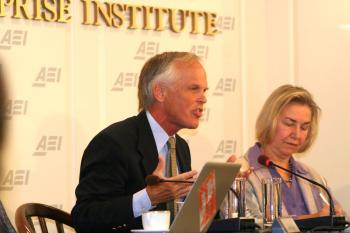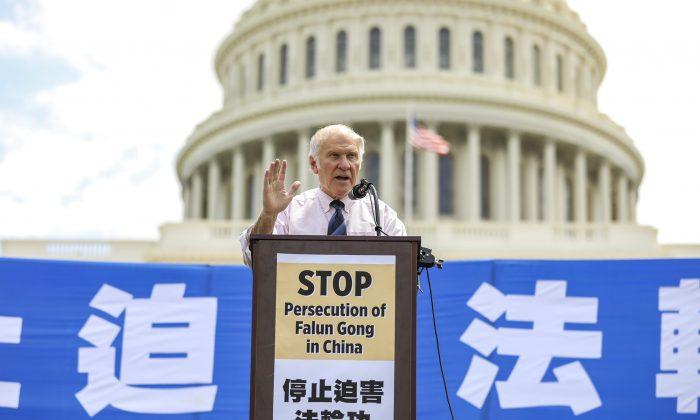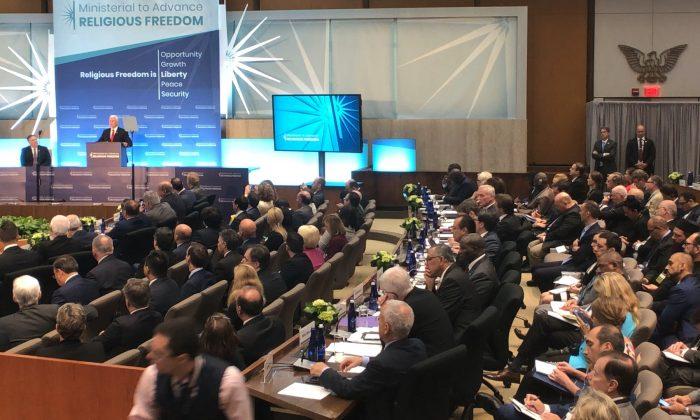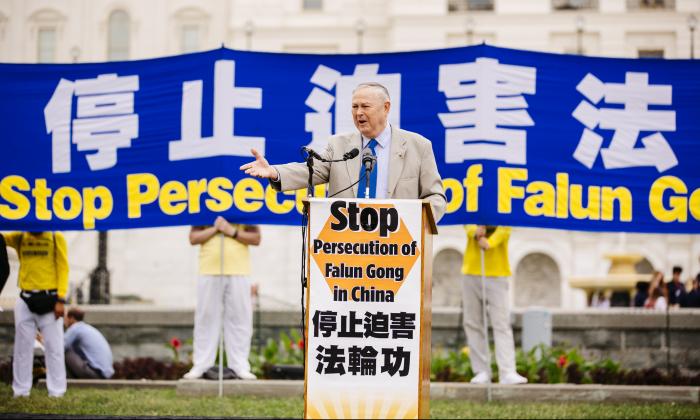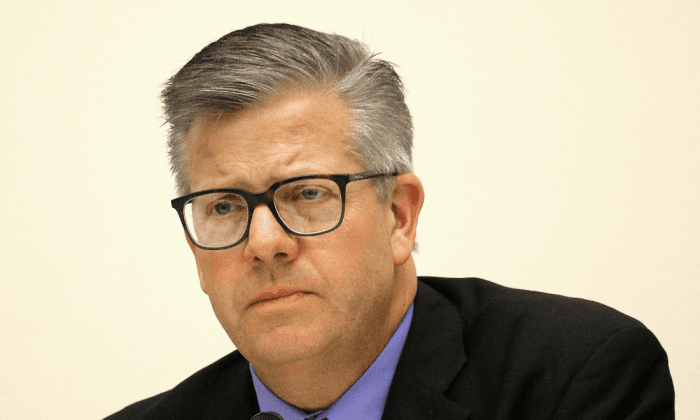WASHINGTON—Twenty years ago in Beijing more than one million Chinese demonstrated at Tiananmen Square, calling for an end to corruption of government officials and for democratic reform.
These protests initially began to mourn the death of a reform Party leader Hu Yaobang, yet as the numbers swelled, the aim shifted toward reform of Communist Party rule.
Beginning on April 15, 1989, with the death of Hu, the demonstrations were brought to a violent close on the early morning of June 4. The People’s Liberation Army (PLA) was ordered to “clear” the Square and carried it out in military fashion, killing thousands—although the exact number has never been confirmed.
A series of panel discussions were held on May 26 at the American Enterprise Institute (AEI) to discuss the effects the reform movement and the Chinese regime’s response during the Tiananmen Square Massacre.
“Twenty years later, the Chinese government still has not reached the truth. [What happened] is not public knowledge and the [Tiananmen Square Massacre] is still a deep wound in society,” said Xiao Qiang, director of the China Internet Project at the Graduate School of Journalism, University of California (Berkeley).
Xiao questioned that is China still cannot reach peace in its own society, “how can we trust China as a rising power to reach a peaceful rise within the world?”
Dan Blumenthal from AEI added that the Chinese regime “has taken great steps to erase [the Tiananmen Square Massacre] from Chinese history.”
The distrust towards the regime reaching down into daily life was a theme mentioned again and again by the panel.
“They wish China was a different society to begin with. The desire for more freedom is always there,” said Carol Lee Hamrin, senior associate for Global China Center, George Mason University.
Hopes for a change in the monolithic Party state culture were dashed after June 4th, explained Hamrin, adding that the Chinese people “lost confidence for reform to be led by the Party” which brought about a “crisis in faith.”
An Orchestrated Massacre
“It was a military operation, if you understand that it means it was an operations order. There were phase lines. The levels of force that were to be used at different phases of the operation were to be dictated,” said retired army Colonel Larry Wortzel, who was an eyewitness of the assault.
Wortzel observed that in addition to students and intellectuals, “Old people, workers, and even farmers were blocking with their tractors armor personnel carriers trying to get in.” There was much discontent the way the country was being run, with 25–30 percent inflation in the urban areas and high levels of corruption, he said.
He added that even the Party was split on the protest. Wortzel walked into military compounds and read the Party bulletin boards, which encouraged support for the demonstrators and to join them on May 17.
Martial law had been declared on May 20. “The troops were fed propaganda that a small group of hooligans were creating the trouble and other bad elements,” said Wortzel. The consensus arose, “Something had to be done about it.”
A contact at the Chinese Embassy gave the number of 2,500 killed. A defector in 1995 in Hong Kong said he read a document that placed the number at 3,700, said Wortzel. We can conclude from this information and other accounts that the numbers killed were in the thousands, not hundreds as it is so often stated.
How the regime reached the decision to handle the crisis is described in “The Tiananmen Papers” (2001), a collection of documents leaked by a high-level Chinese official, of which Dr. Link was the co-editor. Released last May in time for the 20th anniversary, is the secret posthumous memoir of former Party Secretary General Zhao Ziyang, which corroborates the account given in “The Tiananmen Papers.”
Dr. Link spoke of the massacre’s legacy as introducing insecurity in the culture because people after Tiananmen could not talk openly about shared values, about topics of politics and religion.
Looking for Freedom Online
At the Tiananmen Square protests, the whole country in one form or another was out on the street. After the suppression and public discourse was eradicated, the desire for freedom didn’t go away but to a large extent it has been channeled to the Internet, according to Dr. Xiao.
“A discourse embodying values of free speech, human rights, and democracy is emerging [online,]” said Dr. Xiao, the Founder and Editor-in-Chief of the China Digital Times.
There are now 100 million blogs, 300 million Internet users, and over 500 million cell phones and the numbers of these are growing, according to Xiao, who said he was citing official statistics.
Xiao noted that many of the people who were enthralled with the protests at Tiananmen later went into the Internet field.
Young Chinese are increasingly using the Internet to vent their frustrations with the Communist regime. The regime controls what Internet users can see through its Great Firewall and Internet police, said to number 50,000. Users display their resentment for this control, according to Xiao.
The Chinese search engine, Baidu, published the state’s censorship orders. Other blogs followed and published this document.
The bloggers are also setting the national agenda, said Dr. Xiao, as the following example aptly illustrates. During the Sichuan earthquake tragedy, some blogger began to make a list of all the children who had been killed.
Hundreds of volunteers helped.
At first, the information was deleted by the regime, yet their actions looked uncaring and heartless. The regime later came up with a “national government human rights action plan” to publish at least the numbers killed for the sake of good public relations.


